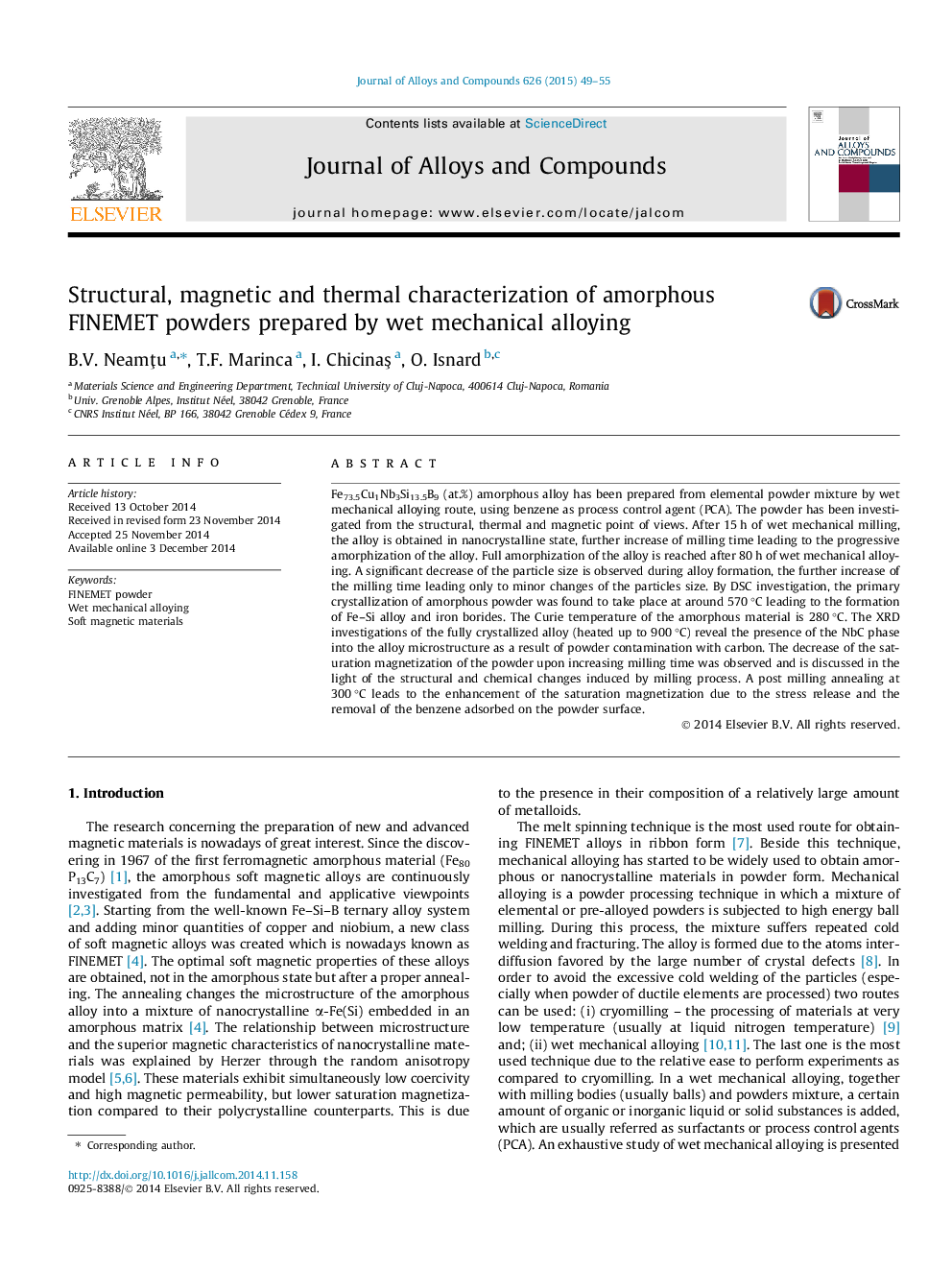| کد مقاله | کد نشریه | سال انتشار | مقاله انگلیسی | نسخه تمام متن |
|---|---|---|---|---|
| 1610230 | 1516267 | 2015 | 7 صفحه PDF | دانلود رایگان |

• Amorphous powder of FINEMET was prepared by wet MA using benzene as PCA.
• Amorphization of the alloy is reached after 80 h of wet MA.
• Magnetization decrease upon increasing milling time and is recovered by annealing.
• NbC phase is formed due to powder contamination with carbon.
Fe73.5Cu1Nb3Si13.5B9 (at.%) amorphous alloy has been prepared from elemental powder mixture by wet mechanical alloying route, using benzene as process control agent (PCA). The powder has been investigated from the structural, thermal and magnetic point of views. After 15 h of wet mechanical milling, the alloy is obtained in nanocrystalline state, further increase of milling time leading to the progressive amorphization of the alloy. Full amorphization of the alloy is reached after 80 h of wet mechanical alloying. A significant decrease of the particle size is observed during alloy formation, the further increase of the milling time leading only to minor changes of the particles size. By DSC investigation, the primary crystallization of amorphous powder was found to take place at around 570 °C leading to the formation of Fe–Si alloy and iron borides. The Curie temperature of the amorphous material is 280 °C. The XRD investigations of the fully crystallized alloy (heated up to 900 °C) reveal the presence of the NbC phase into the alloy microstructure as a result of powder contamination with carbon. The decrease of the saturation magnetization of the powder upon increasing milling time was observed and is discussed in the light of the structural and chemical changes induced by milling process. A post milling annealing at 300 °C leads to the enhancement of the saturation magnetization due to the stress release and the removal of the benzene adsorbed on the powder surface.
Journal: Journal of Alloys and Compounds - Volume 626, 25 March 2015, Pages 49–55